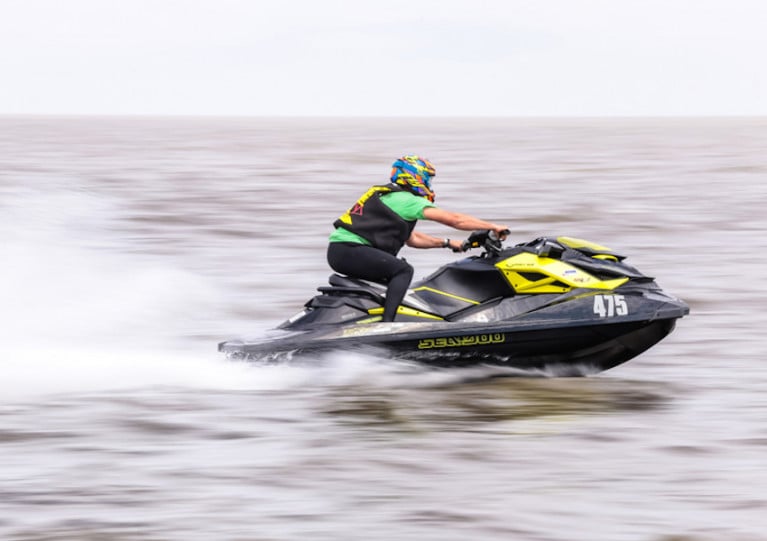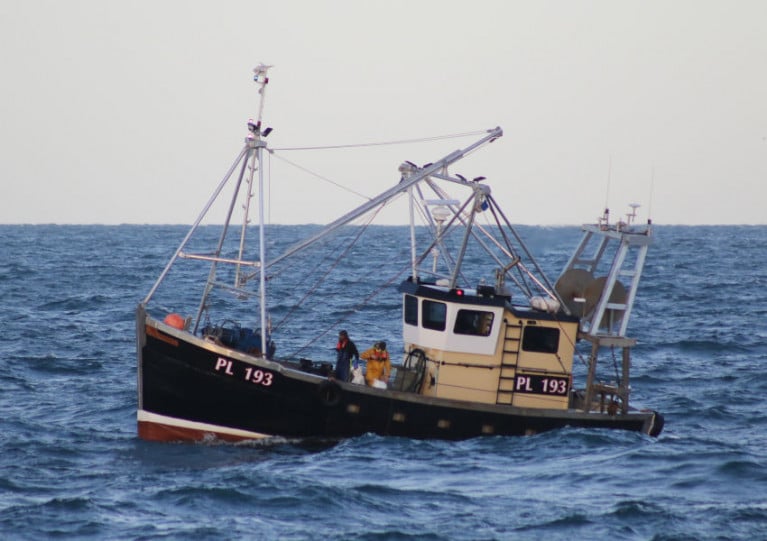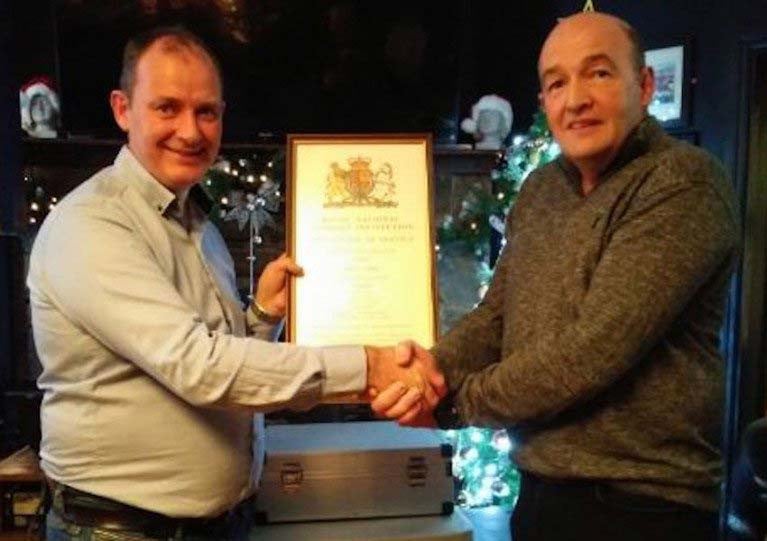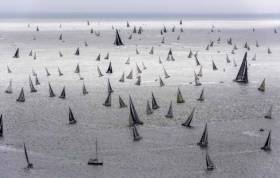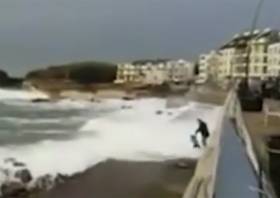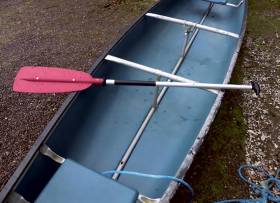Displaying items by tag: Safety
Risk Awareness A Common Thread In Reducing Marine Accidents, Dutch Safety Board Says
Safety “on and around” ships will improve if the risks are prioritised correctly, the Dutch Safety Board’s chairman Chris van Dam has said.
He was commenting on the safety board’s latest six-monthly shipping occurrences report.
The report, covering incidents from July to December 2023, notes that accidents can occur at any time, and “everyone in the shipping world can cite an example of something that went seriously wrong because something unexpected happened”.
“In hindsight, it is often said that the unexpected event could have been foreseen, had the safety risks been understood and recognised,”it says.
“During the past reporting period (July through December 2023), the Dutch Safety Board published several investigations that make it clear what can happen if there is not enough awareness of safety risks on board or if they are not recognised at a crucial moment due to circumstances,”it says.
Three incidents are cited where risk awareness, or lack of it, was a “common thread”.
These include a collision in a North Sea traffic separation scheme in December 2021, where a trawler Z60 Blue Angel collided with the cargo ship Amadeus Aquamarijn above the Wadden Islands.
The mate of the trawler had not seen the general cargo ship and therefore did not divert. The cargo ship did warn the trawler, but subsequently did not check whether the trawler changed its course after being alerted. The collision severely damaged the cargo ship.
The two other incidents occurred in 2022, where there were two fatal occurrences on board historic sailing ships.
In May 2022, a boom fell into the cockpit, seriously injuring one passenger and killing another. In August 2022, a boom on another historic sailing ship broke, killing a young passenger.
The Dutch Safety Board had previously investigated safety on board the historic sailing fleet following a fatal accident on August 21st, 2016, where the mast of a historic sailing ship unexpectedly broke and killed three passengers on the ship.
“ The occurrences in 2022 prompted a follow-up investigation on the safety of the historic sailing fleet,”it says.
“The investigation revealed that not only the crew members, but also the inspection and classification society, lacked knowledge on the potential risks of sailing with historic ships,”it says, and notes “there is very little policy on the safety on board of this sailing fleet”.
“The investigation also showed that knowledge about maintenance, the use of the right materials and techniques is of great importance in recognizing potential risks. New equipment was being used, for example, which entailed other risks that not everyone was aware of and for which no policy had yet been formulated by the supervisory framework,”the report says.
“The lack of knowledge and lack of insight into possible risks made it impossible to assess the extent to which safety risks on board the historical sailing fleet were managed,”it says.
The Dutch Safety Board says has defined five focal points for an organisation's safety management to improve its handling of risks on board:
1. Understanding risks as the starting point. The first step is to identify the safety risks, the risk inventory. What risks do people on board face?
2. Drawing up a safety strategy. The overview of the safety risks is the start of a clear prioritization and the creation of a plan of action, the risk analysis. Step 1 and step 2 together, the risk inventory and evaluation, are also known as the RI&E.
3. Implementing a safety strategy - the next step is the practical implementation of the control measures that follow from the plan of action.
4. The safety approach needs continuous attention. It is important to keep the risk analysis and control measures up to date, for instance when new developments occur.
5. Finally, a safe learning environment is crucial for managing safety risks. This includes effective learning from incidents and unsafe situations. In this respect, it is important that people on board dare to call each other to account for unsafe behaviour and are encouraged to report incidents without fearing that their actions, omissions, mistakes or decisions will be punished (unless they are deliberate or grossly negligent out of unsafe intentions).
The Dutch Safety Board’s six monthly review is here
Users of recreational craft including canoes, kayaks, rowing boats, sailing craft and paddle boards are reminded of the importance of planning their voyage and avoiding dangerous weather and sea conditions.
As the high summer period approaches, the Department of Transport is urging all recreational craft users to comply with their voyage planning obligations before undertaking a trip.
Planning for a trip on the water includes considering:
- Weather conditions and forecasts
- Tides
- The limitations of your vessel
- Crew experience and physical ability
- Any navigational dangers
- Having a contingency plan for when things go wrong
- Making sure someone knows your plans and what to do if they need to raise the alarm
- Having reliable means of communication
Marine Notice No 30 of 2023 highlights this important information and the voyage planning principles. The notice also recommends that before going out on the water, all recreational craft users log a Traffic Report message via the nearest Irish Coast Guard radio station. All persons on board a pleasure craft of less than seven metres in length must wear a personal flotation device or a lifejacket.
Minister of State Jack Chambers said: “As we approach the busy weeks of summer, now is the time to make sure you know your obligations and understand the risks on the water. Be prepared, plan ahead and stay safe.
“I would ask all those who intend to be out on the water over the coming months to prepare, follow the advice and get informed. It’s not worth leaving it to chance.”
For further information on how to stay safe when using recreational craft, read the Code of Practice for the Safe Operation of Recreational Craft.
Man Run Over by Digger Assisted By Carrybridge RNLI
At 9.40pm on Monday 29 August, Carrybridge RNLI’s inshore lifeboat, Douglas Euan & Kay Richards was launched at the request of Belfast Coastgaurd, to assist a man who had been run over by the track of a digger on an island approx. 1 mile north west of the Share Discovery Village.
Winds were Southerly, Force 1. Visibility was good during the hours of darkness.
Prior to the lifeboat leaving the station and following further information on the casualty’s wellbeing, Sligo Coast Guard Rescue Helicopter Rescue 118 was also requested to attend.
The volunteer crew onboard the lifeboat proceeded to the island and swiftly located the casualty with the assistance of a member of the public. The crew assessed the man and found he had sustained lower leg injuries. Casualty care treatment was provided by the crew until the arrival of the helicopter.
After further treatment it was decided that an airlift to hospital was the best course of action. The casualty was placed in a stretcher and carried several hundred meters over rough terrain to the landing site of the helicopter. The man was placed onboard and a further assessment was carried out prior to the departure of the helicopter.
Speaking following the call out, Stephen Scott, Lifeboat Operations Manager at Carrybridge RNLI said: ‘‘We were happy to be able to assist this casualty. The person made the correct decision to swiftly call for help and the multiagency coordination which followed worked exactly as is practiced for in these situations. We would wish the gentleman a speedy recovery from his injuries. If you see someone or something in trouble on the water or are in difficulties yourself the number to dial is: 999 or 112 and ask for the Coastguard.’’
Bundoran RNLI Emergency Services Open Day this Sunday
Final preparations are being made for this Sunday’s RNLI & Emergency Services Open Day, which will be held at Bundoran RNLI Lifeboat Station from 1-4 pm.
The open day, which was last held in 2019, will showcase the equipment and assets used by many of the local emergency services in the area, including Bundoran RNLI Lifeboat, An Garda Síochana, National Ambulance Service, Bundoran Fire & Rescue and Donegal Bay Community First Responders. Representatives from each organisation will be on hand to demonstrate the equipment and answer any questions from those attending. Demonstrations will also be held as well as safety talks for kids.
An RNLI pop up shop will also be in operation on the day with souvenirs from the charity available to purchase as well as a barbecue providing food for hungry spectators.
The event, which is free of charge to attend, will take place this Sunday, 21st August from 1-4 pm at Bundoran RNLI Lifeboat Station, The Pier, West End, Bundoran, F94 XN44.
Use Your Jet Ski Safely At The Coast This Summer
The UK’s coastguard is warning people of the dangers of jet skis, personal watercraft (PWC) and motorised recreational craft after a spate of incidents in recent weeks around the south west coast of England.
Many were breakdowns, but these incidents also included jet skis and motor boats overturning in the water, getting too close to other vessels, collisions and conflict between users of these craft and other sea users, such as swimmers.
Sadly, two incidents resulted in fatalities.
Richy Williams, senior coastal operations officer for the area with HM Coastguard, said: “The majority of PWC and motorcraft users operate their vessels responsibly but there are some who don’t respect the water, the capabilities of their vessels and other water users.
“We want people to enjoy themselves at the coast, but also to make sure they’re staying safe.
“Jet skis, PWCs and motor vessels can be powerful machines, so always operate your vessel within the limits of your, and your vessel’s, capabilities. Be aware of the presence of other water users and ensure that you are aware of the impact your activities have on others.
“Ensure you have a means of alerting the coastguard if you get into difficulties such as a VHF, handheld VHF or mobile phone in a dry bag.
“A personal locator beacon (PLB) may be useful for more remote locations, along with flares and, where possible, always wear a kill cord which will cut your vessels engine should you move away from its controls or become detached from your vessel.
“Know the bylaws that are in place in the location you are operating your vessel, stick to them and be respectful of other water users. If you see anyone putting others at risk or in difficulty at the coast, call 999 [or 112 in Ireland] and ask for the coastguard.”
RNLI fishing safety manager Frankie Horne has urged the fishing community to avail of safety training that is on offer for their crews and to ensure that their safety equipment is up to date.
It comes after the skipper of a fishing vessel that sank late last year off the Isle of Man has attributed their rescue to the safety training the crew had undertaken previously and to their lifejackets, which were fitted with personal locator beacons (PLBs).
On the evening of 23 November last year, the fishing vessel Polaris suffered a catastrophic hull failure in the Irish Sea off the west coast of the Isle of Man.
The vessel sank so rapidly that the skipper only had time to send out a Mayday to the coastguard and other surrounding fishing boats before the vessel became submerged.
The coastguard immediately launched two RNLI lifeboats, from Port St Mary and Port Erin, and a rescue helicopter. However, it was a local fishing vessel, Lynn Marie, which arrived first on scene.
The skipper and a crew member from Polaris had been in the water for at least 15-20 minutes before help arrived.
The skipper of the Lynn Marie feared the worst on arriving at the scene as the Polaris had already gone below the water. The skipper stopped his engine to listen for the crew of the Polaris, which proved a wise decision as he heard two men in the water shouting. The Lynn Marie crew located them with a search light and recovered them from the water.
‘I can tell you that there is no doubt that the lifejackets saved our lives’
Commenting on the rescue, Horne said: “After speaking with Gordon Mills, the skipper of the Polaris, and the crew of Lynn Marie on their arrival at Peel, it was quite clear that this could have been a very different story had the crew of both vessels not acted so professionally.
“The crew had attended safety training and wore lifejackets fitted with personal locator beacons which had increased their chances of survival.”
Gordon Mills, skipper of Polaris, added: “At no time did I feel our lives were in danger due to our training and equipment.
“We had a policy of wearing lifejackets on the working deck since attending refresher training, where I was shown a film involving fishermen wearing their normal working clothes, being put through their paces in the RNLI Survival Centre Environmental Pool, both with and without lifejackets in cold water with wave movement whilst attempting to recover themselves.”
Mills added: “To see fishermen struggling in a controlled environment and only lasting a few minutes or in some cases a few seconds without the lifejacket makes you think about your own safety.
“I can tell you that there is no doubt that the lifejackets saved our lives. We wouldn’t have even been afloat for the crew of fishing vessel Lynn Marie to recover us from the water had we not been wearing them.
“I would encourage all fishermen to start wearing their lifejackets while on deck — you just never know when you might need it.”
The Importance of Sea Safety – A Salutary Speedboat Story
With most boats either safely ashore or secured in safe mooring berthages, this is a month to prepare for the season ahead and one of those aspects, about which I feel particularly strongly is safety on the water. There is an obligation on all of us who enjoy watersports to exercise responsibility, to be able to look after ourselves and to ensure our crews do likewise. We also have a responsibility not to be the cause of unnecessary call-outs to the rescue services.
To underline these points, I have the story this week from a lifeboatman with 32 years’ experience at Youghal on the East Cork coastline.
During the 17th century, Youghal was one of Ireland's main ports, far more important than Cork Harbour, which was described officially then as “a port near Youghal.”
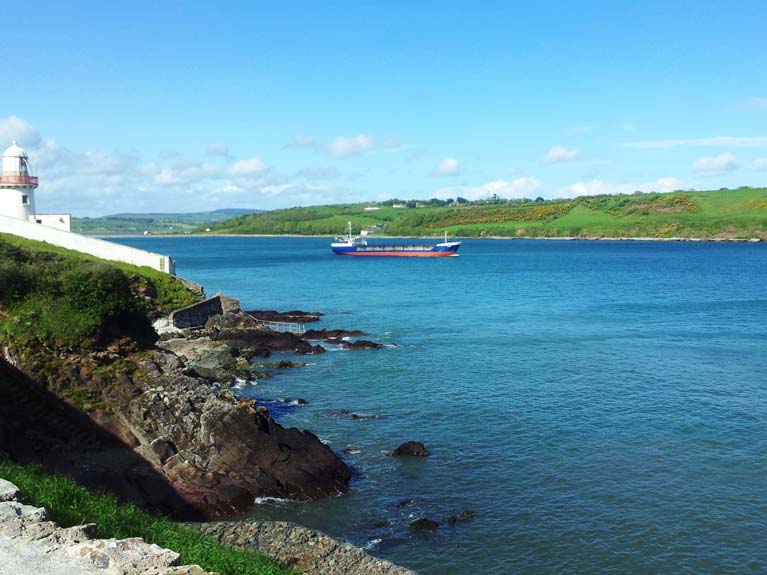 Youghal Lighthouse and Harbour entrance
Youghal Lighthouse and Harbour entrance
That historical record of the respective ports may have some association with the confusion of two-speed boat crew to whom navigation was an art they did not have the knowledge or the resources to understand when the Youghal lifeboatman came upon their confusion.
The story is told by John Innes who has retired after 32 years’ service with Youghal lifeboat. He was Helm of three Atlantic class lifeboats at Youghal - the Atlantic 21 Marjory Turner; the Atlantic 75 Patricia Jennings and the Youghal station’s current Atlantic 85 Gordon and Phil. He also served as Lifeboat Training Co-ordinator from 2001-2009 and again between 2016-2017. During his RNLI service, John was involved in saving 34 lives at sea.
Doing a bit of research about Youghal in preparing this week’s Podcast I discovered that nuns once made sure that the light was maintained on Youghal Lighthouse. It was a duty of the nunnery of the Chapel of St. Anne’s from 1202 until the Reformation in the 1530s when the nunnery had to be abandoned as was the light. Construction of the present lighthouse, designed by George Halpin, began in 1848 and it was brought into operation in 1852.
I also discovered that there was a climate incident described in the historical records as a "great convulsion of nature" in the province of Munster in the year 830, in which over a thousand people were killed in a “fierce storm.” One of the storm’s effects was to change the flow of the famous River Blackwater which flows through Youghal. This formed a new entrance to Youghal Harbour, the current one – which confused those two speedboat men!
#FastnetRace - With the days ticking down till the 2017 Rolex Fastnet Race, Ocean Safety has published its free Fastnet Safety Checklist to ensure your yacht is ready for the rigours of the challenging seas around Fastnet Rock.
One of the most important items for the race for the race undoubtedly the liferaft, which will need a service before setting out from Cowes on Sunday, 6 August.
Ireland's CH Marine is a leading supplier of liferafts and services, hires and sells rafts. Both for leisure and commercial vessels.
Video Shows Child Swept Off Feet By Wave On Irish Coast
#WaterSafety - The Irish Coast Guard has once again warned the public to stay back and say safe in coastal areas during severe weather after video emerged of a young child swept off their feet by a surprise wave.
Independet.ie has video of the recent incident in Portstewart on the North Coast, where a man and the child are filmed walking along the promenade as large waves lap over the edge at high tide.
Basic Safety Measures Not Taken Ahead Of Kenmare Canoe Drowning - MCIB
#MCIB - Basic water safety precautions were not taken before a canoe capsize incident that led to the drowning of a man off Kenmare almost a year ago.
That’s the main conclusion of the official report into the tragedy in Kenmare Bay in which local man Bill Topham died, as previously reported on Afloat.ie.
Topham had been canoeing to islands in Kenmare Bay with a friend for a duck shoot when their two-man vessel overturned in high winds on the afternoon of 31 January 2016.
The Marine Casualty Investigation Board report identified that neither passenger on the canoe was wearing a personal flotation device.
It also concluded that their decision to undertake their trip amid adverse weather conditions with a fully laden canoe, including two boisterous dogs, greatly increased the “inevitable element of natural risk” involved.
The full MCIB report into the incident is available to download below.


























